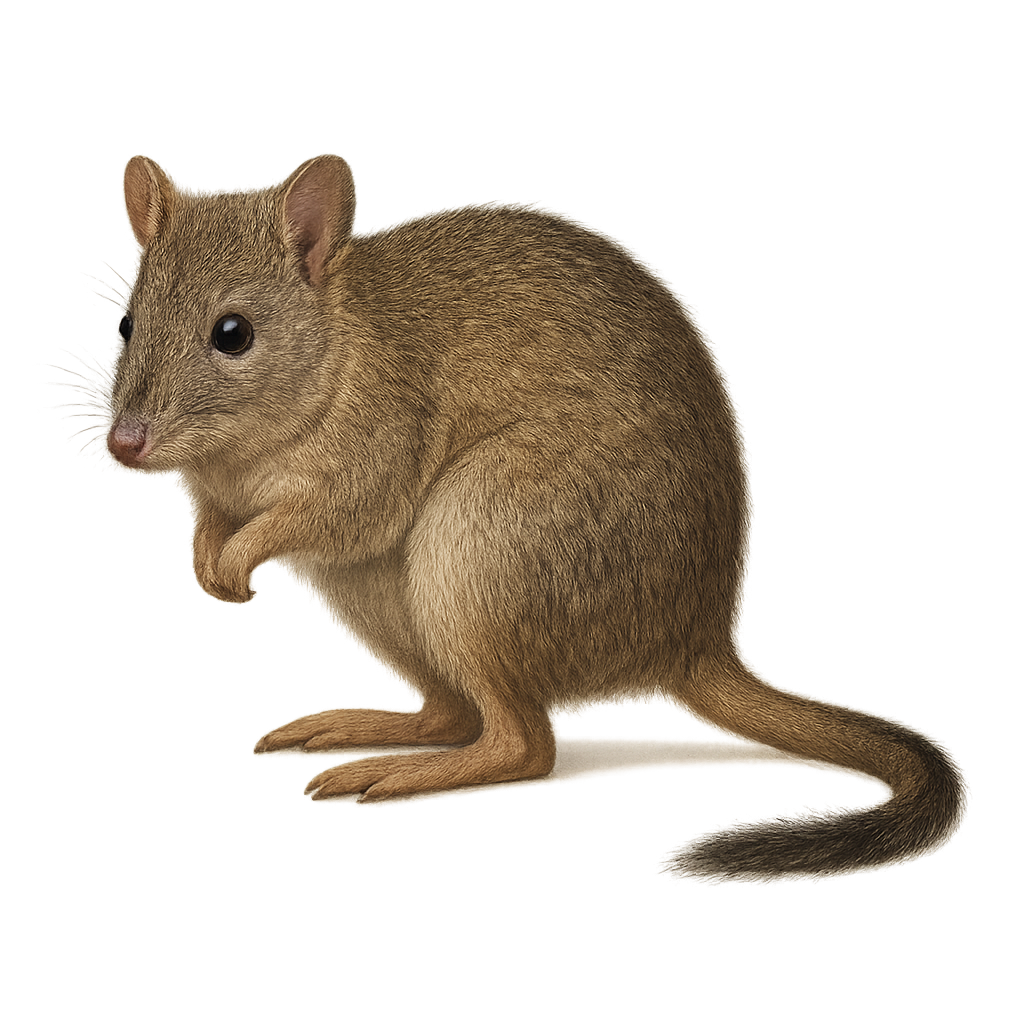Your wildlife photography guide.
Explore the woylie in detail, study its behavior, prepare your shots.
Where to observe and photograph the woylie in the wild
Learn where and when to spot the woylie in the wild, how to identify the species based on distinctive features, and what natural environments it inhabits. The WildlifePhotographer app offers tailored photography tips that reflect the woylie’s behavior, helping you capture better wildlife images. Explore the full species profile for key information including description, habitat, active periods, and approach techniques.
Woylie
Scientific name: Bettongia penicillata

IUCN Status: Vulnerable
Family: POTOROIDAE
Group: Mammals
Sensitivity to human approach: Suspicious
Minimum approach distance: 10 m
Rut period: February to May
Gestation: 21-24 jours
Births: February to June
Habitat:
open forests, woodlands, scrublands
Activity period :
Mainly active at night, generally discreet during the day.
Identification and description:
The woylie, or Bettongia penicillata, is a small Australian marsupial known for its distinctive brush-tailed appearance. This nocturnal creature inhabits open forests and woodlands, playing a crucial ecological role by dispersing fungal spores. Measuring about 30 to 38 cm in length, with a tail of 29 to 36 cm, it weighs between 1.1 and 1.6 kg. Its fur is grey-brown with a lighter underside. Once widespread, its habitat has diminished due to predation by foxes and cats, as well as habitat loss. Conservation efforts are underway to protect this vulnerable species, including the establishment of reserves and captive breeding programs.
Recommended lens:
400 mm – adjust based on distance, desired framing (portrait or habitat), and approach conditions.
Photography tips:
To photograph the brush-tailed bettong, it is advisable to use a telephoto lens of 400mm or more to capture detailed images without disturbing the animal. Being nocturnal, it's best to plan your shots at dusk or dawn when the light is soft. Use a tripod to stabilize your camera and increase the ISO to compensate for low light. Be patient and discreet to avoid scaring this suspicious animal.
The WildlifePhotographer App is coming soon!
Be the first to explore the best nature spots, track rutting seasons, log your observations, and observe more wildlife.
Already 1 428 wildlife lovers subscribed worldwide

